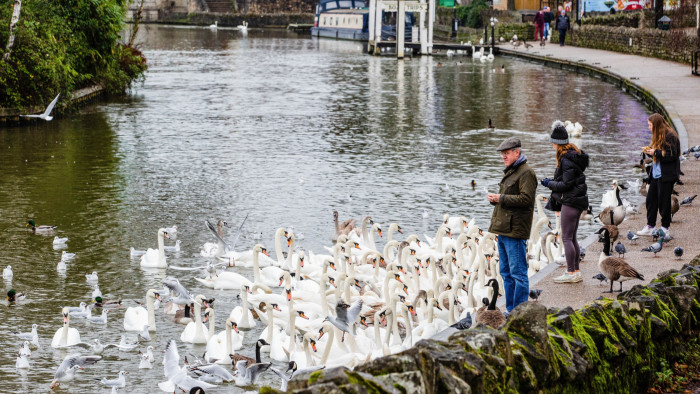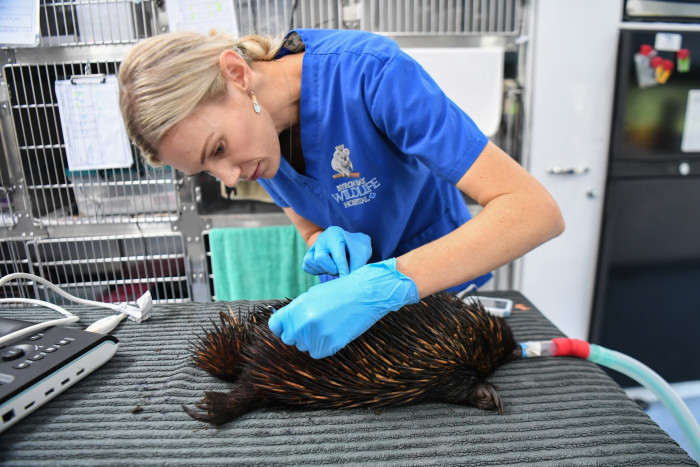Dangers of invading nature become ever starker

Roula Khalaf, Editor of the FT, selects her favourite stories in this weekly newsletter.
Urbanisation, climate change and intensive agriculture are among the factors driving a startling rise in zoonotic diseases — infections that jump from animals to people.
Covid-19 and monkeypox are among recent examples of zoonotic diseases, or zoonoses. And three out of four new or emerging infectious diseases now come from animals, according to the US Centers for Disease Control. These diseases can spread through contact with animals or places where they live and roam; “vectors” such as mosquitoes and ticks; and contaminated food or water.
Kris Murray, Gambia-based associate professor of environment and health at the London School of Hygiene & Tropical Medicine, says urbanisation is a major driver of zoonoses. Half of the world’s population live in cities and this is expected to reach two-thirds by 2050, according to the UN.
“[Urbanisation] might typically remove natural habitats and reshape landscapes,” Murray says. “It also often leads to increases in population density of people. All of these can have potential impacts on host/vector species ecology. This can lead to new opportunities for human-animal contact to occur and thereby the risk of disease spillover.”
But there is “a lot” that could be done to mitigate and reduce the risks, he suggests. “We need to make drastic changes to how we manage the planet, in order to bring so many other crises, like climate change and biodiversity loss, under control,” he explains.
“The way we manage our ecosystems will always provide opportunities for contact with animals and the spread of disease. So, if we change the way we manage them, we cannot only protect biodiversity but we can probably also reduce the risk of spillover and possibly pandemic risk.”
Climate change has been shown to be a driver of the increase in zoonotic diseases. This July, a report by the World Health Organization found that rising temperatures increase the population of hosts of zoonotic diseases — such as the Aedes albopictus mosquito — by “facilitating survival in higher latitudes and altitudes”.
Changing weather can cause migration, too, altering the natural balance between species in a given area. That could cause an increase in the population of some species that might be carriers of diseases that could infect people.

Climate change also creates a higher likelihood of heavy rainfall, floods and hurricanes, increasing the risk of waterborne disease outbreaks and threatening biodiversity, which is important for controlling zoonotic diseases.
Researchers are seeking ways to combat this. Sara Rooney, a doctoral student at the Liverpool School of Tropical Medicine, is working on a project to block virus infections within the mosquito, thereby disrupting zoonotic transmission. “My team and others are looking at [the project’s] ability to block viruses that are emerging across the UK and Europe, namely West Nile and Usutu,” she says. “It’s incredibly promising, and the hope is this can be used more extensively to prevent and limit outbreaks of vector-borne diseases.”
Factory farming and wildlife markets are additional drivers of zoonoses, says Justine Butler, head of research at Viva!, a veganism campaigning charity. “Ebola and Mers are all examples of zoonotic diseases that spread to humans from animals,” she notes. “These [are known as] spillover events, which occur when humans invade wildlife habitats, at wet markets and in factory farms.”
Factory farming is an industrialised system of rearing livestock by intensive methods, with the aim of maximising production while minimising costs. But a report commissioned by campaign group Compassion in World Farming found the risk of E. coli and salmonella infection is “often greater” in intensive production systems, while excessive use of antibiotics on otherwise healthy animals to speed their growth is contributing to the rapid growth and spread of antimicrobial resistance.
A big concern for Butler is bird flu. “Before Covid, most scientists thought the next pandemic would be caused by an avian influenza virus emerging from a poultry or pig farm,” she says.
About 160 cases of a “highly pathogenic” strain of avian influenza, H5N1, have been reported in the UK among poultry and captive birds since late October 2021. This resulted in the culling of 3.2mn birds, and an “avian influenza prevention zone” was imposed last week across large parts of eastern England that requires indoor housing of all poultry and captive birds.
For Butler, a vegan diet is one practical way to cut the risk of more zoonotic diseases emerging. “People keep saying they want to get back to normal, but it was normal that got us here,” she says.
Comments